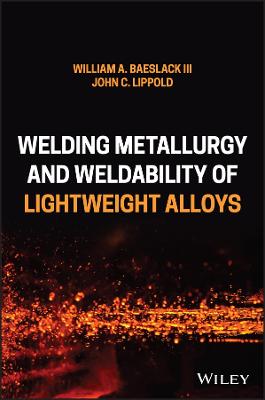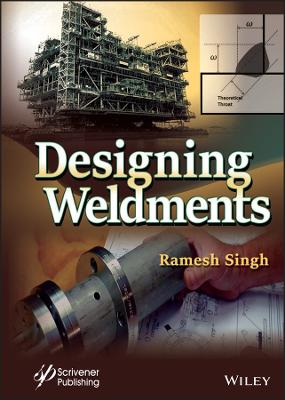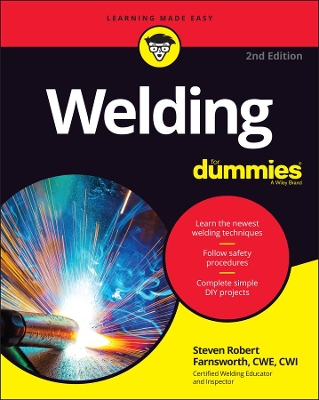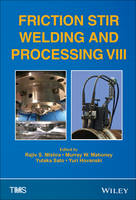Welding Engineering
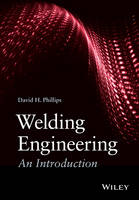 -15%
portes grátis
-15%
portes grátis
Welding Engineering
An Introduction
Phillips, David H.
John Wiley & Sons Inc
02/2016
304
Dura
Inglês
9781118766446
15 a 20 dias
808
Descrição não disponível.
Preface xii
Acknowledgments xiii
1 What is Welding Engineering? 1
1.1 Introduction to Welding Processes 2
2 Arc Welding Processes 4
2.1 Fundamentals and Principles of Arc Welding 4
2.1.1 Fundamentals of an Electric Arc 6
2.1.2 Arc Voltage 7
2.1.3 Polarity 9
2.1.4 Heat Input 10
2.1.5 Welding Position 11
2.1.6 Filler Metals and Electrodes 12
2.1.7 Shielding 12
2.1.7.1 Gas Shielding 13
2.1.7.2 Flux Shielding 13
2.1.8 Weld Joints and Weld Types for Arc Welding 14
2.1.9 Primary Operating Variables in Arc Welding 16
2.1.9.1 Voltage 16
2.1.9.2 Current 16
2.1.9.3 Electrode Feed Rate/Wire Feed Speed 16
2.1.9.4 Welding Travel Speed 17
2.1.10 Metal Transfer Mode 18
2.1.11 Arc Blow 18
2.1.12 Common Arc Welding Defects and Discontinuities 19
2.2 Arc Welding Power Supplies 20
2.2.1 Transformers 20
2.2.2 Generators 21
2.2.3 Important Electrical Elements in Arc Welding Power Supplies 22
2.2.4 Volt?]Ampere Characteristic of Arc Welding Power Supplies 26
2.2.5 Duty Cycle 29
2.3 Shielded Metal Arc Welding 30
2.4 Gas Tungsten Arc Welding 38
2.5 Plasma Arc Welding 46
2.6 Gas Metal Arc Welding 49
2.7 Flux Cored Arc Welding 59
2.8 Submerged Arc Welding 62
2.9 Other Arc Welding Processes 67
2.9.1 Electrogas Welding 67
2.9.2 Electroslag Welding 68
2.9.3 Arc Stud Welding 70
Recommended Reading for Further Information 73
3 Resistance Welding Processes 74
3.1 Fundamentals and Principles of Resistance Welding Processes 74
3.1.1 Resistance and Resistivity 74
3.1.2 Current Range and Lobe Curves 77
3.2 Resistance Spot Welding 79
3.3 Resistance Seam Welding 83
3.4 Resistance Projection Welding 85
3.5 High Frequency Welding 88
3.6 Flash Welding 90
Recommended Reading for Further Information 94
4 Solid?]State Welding Processes 95
4.1 Fundamentals and Principles of Solid?]State Welding 95
4.1.1 Solid?]State Welding Theory 95
4.1.2 Roll Bonding Theory 96
4.2 Friction Welding Processes 97
4.2.1 Inertia Friction Welding 99
4.2.2 Continuous Drive Friction Welding 101
4.2.3 Linear Friction Welding 102
4.2.4 Friction Stir Welding 102
4.3 Other Solid?]State Welding Processes 106
4.3.1 Diffusion Welding 106
4.3.2 Explosion Welding 109
4.3.3 Ultrasonic Welding 111
Recommended Reading for Further Information 113
5 High Energy Density Welding Processes 114
5.1 Fundamentals and Principles of High Energy Density Welding 114
5.1.1 Power Density 114
5.1.2 Keyhole Mode Welding 116
5.2 Laser Beam Welding 117
5.3 Electron Beam Welding 119
Recommended Reading for Further Information 122
6 Other Approaches to Welding and Joining 123
6.1 Brazing and Soldering 123
6.2 Welding of Plastics 125
6.2.1 Hot Tool (Plate) Welding 126
6.2.2 Hot Gas Welding 128
6.2.3 Implant Induction Welding 128
6.2.4 Ultrasonic Welding 129
6.2.5 Vibration Welding 129
6.3 Adhesive Bonding 130
6.4 Novel and Hybrid Welding Processes 130
6.5 Oxyfuel Welding and Cutting 133
6.6 Other Cutting Processes 137
6.6.1 Plasma Cutting 137
6.6.2 Laser Beam Cutting 137
6.6.3 Air Carbon Arc Gouging 137
Recommended Reading for Further Information 141
7 Design Considerations for Welding 142
7.1 Introduction to Welding Design 142
7.2 Mechanical Properties 143
7.2.1 Yield Strength 143
7.2.2 Tensile Strength 143
7.2.3 Ductility 143
7.2.4 Fatigue Strength 143
7.2.5 Toughness 144
7.2.6 Mechanical Properties-Effect of Temperature 144
7.3 Physical Properties 145
7.3.1 Thermal Conductivity 145
7.3.2 Melting Temperature 145
7.3.3 Coefficient of Thermal Expansion 146
7.3.4 Electrical Conductivity 146
7.4 Design Elements for Welded Connections 146
7.4.1 Joint and Weld Types 147
7.4.2 Joint and Weld Type Selection Considerations 148
7.4.3 Weld Joint Nomenclature-Groove Welds 152
7.4.4 Weld Joint Nomenclature-Fillet Welds 153
7.4.5 Welding Positions 154
7.5 Welding Symbols 155
7.6 Weld Sizing 161
Recommended Reading for Further Information 164
8 Heat Flow, Residual Stress and Distortion 165
8.1 Heat Flow 165
8.2 Fundamentals and Principles of Residual Stress and Distortion 169
8.3 Approaches to Minimizing or Eliminating Distortion 173
Recommended Reading for Further Information 176
9 Welding Metallurgy 177
9.1 Introduction to Welding Metallurgy 177
9.2 The Fusion Zone 180
9.3 The Partially Melted Zone 182
9.4 The Heat?]Affected Zone (HAZ) 183
9.5 Introduction to Phase Diagrams 184
Recommended Reading for Further Information 186
10 Welding Metallurgy of Carbon Steels 187
10.1 Introduction to Steels 187
10.2 Steel Microstructures and the Iron?]Iron Carbide Diagram 189
10.3 Continuous Cooling Transformation (CCT) Diagrams 194
10.4 Hardness and Hardenability 196
10.5 Hydrogen Cracking 199
10.6 Heat?]Affected Zone Microstructures in Steel 200
Recommended Reading for Further Information 202
11 Welding Metallurgy of Stainless Steels 203
11.1 Introduction to Stainless Steels 203
11.2 Constitution Diagrams 204
11.3 Martensitic Stainless Steels 206
11.4 Ferritic Stainless Steels 207
11.5 Austenitic Stainless Steels 209
11.6 Duplex Stainless Steels 214
Recommended Reading for Further Information 216
12 Welding Metallurgy of Nonferrous Alloys 217
12.1 Aluminum Alloys 217
12.2 Nickel?]Based Alloys 222
12.3 Titanium Alloys 226
12.4 Copper Alloys 229
12.5 Magnesium Alloys 230
Recommended Reading for Further Information 232
13 Weld Quality 233
13.1 Weld Discontinuities and Defects 233
13.2 Mechanical Testing of Weldments 235
13.2.1 Tensile Testing 235
13.2.2 Ductility Testing 236
13.2.3 Toughness Testing 237
13.2.4 Fatigue Testing 239
13.3 Nondestructive Testing 243
13.3.1 Visual Inspection 244
13.3.2 Liquid Penetrant Testing 244
13.3.3 Magnetic Particle Testing 246
13.3.4 Radiographic Testing 247
13.3.5 Ultrasonic Testing 250
13.4 Introduction to Fractography 252
Recommended Reading for Further Information 254
14 Codes and Standards 255
14.1 Introduction to Standards 255
14.2 AWS D1.1-"Structural Welding Code-Steel" 261
14.2.1 Welding and Welder Qualification 262
14.2.2 Fabrication and Inspection 269
Recommended Reading for Further Information 269
15 Safe Practices in Welding 270
15.1 Electrical Shock 270
15.2 Radiation 270
15.3 Burns 271
15.4 Smoke and Fumes 271
15.5 Welding in Confined Space 271
15.6 Fire and Explosion Danger 271
15.7 Compressed Gasses 272
15.8 Hazardous Materials 272
Recommended Reading for Further Information 272
Index 273
Acknowledgments xiii
1 What is Welding Engineering? 1
1.1 Introduction to Welding Processes 2
2 Arc Welding Processes 4
2.1 Fundamentals and Principles of Arc Welding 4
2.1.1 Fundamentals of an Electric Arc 6
2.1.2 Arc Voltage 7
2.1.3 Polarity 9
2.1.4 Heat Input 10
2.1.5 Welding Position 11
2.1.6 Filler Metals and Electrodes 12
2.1.7 Shielding 12
2.1.7.1 Gas Shielding 13
2.1.7.2 Flux Shielding 13
2.1.8 Weld Joints and Weld Types for Arc Welding 14
2.1.9 Primary Operating Variables in Arc Welding 16
2.1.9.1 Voltage 16
2.1.9.2 Current 16
2.1.9.3 Electrode Feed Rate/Wire Feed Speed 16
2.1.9.4 Welding Travel Speed 17
2.1.10 Metal Transfer Mode 18
2.1.11 Arc Blow 18
2.1.12 Common Arc Welding Defects and Discontinuities 19
2.2 Arc Welding Power Supplies 20
2.2.1 Transformers 20
2.2.2 Generators 21
2.2.3 Important Electrical Elements in Arc Welding Power Supplies 22
2.2.4 Volt?]Ampere Characteristic of Arc Welding Power Supplies 26
2.2.5 Duty Cycle 29
2.3 Shielded Metal Arc Welding 30
2.4 Gas Tungsten Arc Welding 38
2.5 Plasma Arc Welding 46
2.6 Gas Metal Arc Welding 49
2.7 Flux Cored Arc Welding 59
2.8 Submerged Arc Welding 62
2.9 Other Arc Welding Processes 67
2.9.1 Electrogas Welding 67
2.9.2 Electroslag Welding 68
2.9.3 Arc Stud Welding 70
Recommended Reading for Further Information 73
3 Resistance Welding Processes 74
3.1 Fundamentals and Principles of Resistance Welding Processes 74
3.1.1 Resistance and Resistivity 74
3.1.2 Current Range and Lobe Curves 77
3.2 Resistance Spot Welding 79
3.3 Resistance Seam Welding 83
3.4 Resistance Projection Welding 85
3.5 High Frequency Welding 88
3.6 Flash Welding 90
Recommended Reading for Further Information 94
4 Solid?]State Welding Processes 95
4.1 Fundamentals and Principles of Solid?]State Welding 95
4.1.1 Solid?]State Welding Theory 95
4.1.2 Roll Bonding Theory 96
4.2 Friction Welding Processes 97
4.2.1 Inertia Friction Welding 99
4.2.2 Continuous Drive Friction Welding 101
4.2.3 Linear Friction Welding 102
4.2.4 Friction Stir Welding 102
4.3 Other Solid?]State Welding Processes 106
4.3.1 Diffusion Welding 106
4.3.2 Explosion Welding 109
4.3.3 Ultrasonic Welding 111
Recommended Reading for Further Information 113
5 High Energy Density Welding Processes 114
5.1 Fundamentals and Principles of High Energy Density Welding 114
5.1.1 Power Density 114
5.1.2 Keyhole Mode Welding 116
5.2 Laser Beam Welding 117
5.3 Electron Beam Welding 119
Recommended Reading for Further Information 122
6 Other Approaches to Welding and Joining 123
6.1 Brazing and Soldering 123
6.2 Welding of Plastics 125
6.2.1 Hot Tool (Plate) Welding 126
6.2.2 Hot Gas Welding 128
6.2.3 Implant Induction Welding 128
6.2.4 Ultrasonic Welding 129
6.2.5 Vibration Welding 129
6.3 Adhesive Bonding 130
6.4 Novel and Hybrid Welding Processes 130
6.5 Oxyfuel Welding and Cutting 133
6.6 Other Cutting Processes 137
6.6.1 Plasma Cutting 137
6.6.2 Laser Beam Cutting 137
6.6.3 Air Carbon Arc Gouging 137
Recommended Reading for Further Information 141
7 Design Considerations for Welding 142
7.1 Introduction to Welding Design 142
7.2 Mechanical Properties 143
7.2.1 Yield Strength 143
7.2.2 Tensile Strength 143
7.2.3 Ductility 143
7.2.4 Fatigue Strength 143
7.2.5 Toughness 144
7.2.6 Mechanical Properties-Effect of Temperature 144
7.3 Physical Properties 145
7.3.1 Thermal Conductivity 145
7.3.2 Melting Temperature 145
7.3.3 Coefficient of Thermal Expansion 146
7.3.4 Electrical Conductivity 146
7.4 Design Elements for Welded Connections 146
7.4.1 Joint and Weld Types 147
7.4.2 Joint and Weld Type Selection Considerations 148
7.4.3 Weld Joint Nomenclature-Groove Welds 152
7.4.4 Weld Joint Nomenclature-Fillet Welds 153
7.4.5 Welding Positions 154
7.5 Welding Symbols 155
7.6 Weld Sizing 161
Recommended Reading for Further Information 164
8 Heat Flow, Residual Stress and Distortion 165
8.1 Heat Flow 165
8.2 Fundamentals and Principles of Residual Stress and Distortion 169
8.3 Approaches to Minimizing or Eliminating Distortion 173
Recommended Reading for Further Information 176
9 Welding Metallurgy 177
9.1 Introduction to Welding Metallurgy 177
9.2 The Fusion Zone 180
9.3 The Partially Melted Zone 182
9.4 The Heat?]Affected Zone (HAZ) 183
9.5 Introduction to Phase Diagrams 184
Recommended Reading for Further Information 186
10 Welding Metallurgy of Carbon Steels 187
10.1 Introduction to Steels 187
10.2 Steel Microstructures and the Iron?]Iron Carbide Diagram 189
10.3 Continuous Cooling Transformation (CCT) Diagrams 194
10.4 Hardness and Hardenability 196
10.5 Hydrogen Cracking 199
10.6 Heat?]Affected Zone Microstructures in Steel 200
Recommended Reading for Further Information 202
11 Welding Metallurgy of Stainless Steels 203
11.1 Introduction to Stainless Steels 203
11.2 Constitution Diagrams 204
11.3 Martensitic Stainless Steels 206
11.4 Ferritic Stainless Steels 207
11.5 Austenitic Stainless Steels 209
11.6 Duplex Stainless Steels 214
Recommended Reading for Further Information 216
12 Welding Metallurgy of Nonferrous Alloys 217
12.1 Aluminum Alloys 217
12.2 Nickel?]Based Alloys 222
12.3 Titanium Alloys 226
12.4 Copper Alloys 229
12.5 Magnesium Alloys 230
Recommended Reading for Further Information 232
13 Weld Quality 233
13.1 Weld Discontinuities and Defects 233
13.2 Mechanical Testing of Weldments 235
13.2.1 Tensile Testing 235
13.2.2 Ductility Testing 236
13.2.3 Toughness Testing 237
13.2.4 Fatigue Testing 239
13.3 Nondestructive Testing 243
13.3.1 Visual Inspection 244
13.3.2 Liquid Penetrant Testing 244
13.3.3 Magnetic Particle Testing 246
13.3.4 Radiographic Testing 247
13.3.5 Ultrasonic Testing 250
13.4 Introduction to Fractography 252
Recommended Reading for Further Information 254
14 Codes and Standards 255
14.1 Introduction to Standards 255
14.2 AWS D1.1-"Structural Welding Code-Steel" 261
14.2.1 Welding and Welder Qualification 262
14.2.2 Fabrication and Inspection 269
Recommended Reading for Further Information 269
15 Safe Practices in Welding 270
15.1 Electrical Shock 270
15.2 Radiation 270
15.3 Burns 271
15.4 Smoke and Fumes 271
15.5 Welding in Confined Space 271
15.6 Fire and Explosion Danger 271
15.7 Compressed Gasses 272
15.8 Hazardous Materials 272
Recommended Reading for Further Information 272
Index 273
Este título pertence ao(s) assunto(s) indicados(s). Para ver outros títulos clique no assunto desejado.
welding engineering;introduction; Welding Engineering textbook; arc welding; resistance welding; solid-state welding; welding design; metallurgy; construction skills; metalwork; cutting metal; state license; shop class
Preface xii
Acknowledgments xiii
1 What is Welding Engineering? 1
1.1 Introduction to Welding Processes 2
2 Arc Welding Processes 4
2.1 Fundamentals and Principles of Arc Welding 4
2.1.1 Fundamentals of an Electric Arc 6
2.1.2 Arc Voltage 7
2.1.3 Polarity 9
2.1.4 Heat Input 10
2.1.5 Welding Position 11
2.1.6 Filler Metals and Electrodes 12
2.1.7 Shielding 12
2.1.7.1 Gas Shielding 13
2.1.7.2 Flux Shielding 13
2.1.8 Weld Joints and Weld Types for Arc Welding 14
2.1.9 Primary Operating Variables in Arc Welding 16
2.1.9.1 Voltage 16
2.1.9.2 Current 16
2.1.9.3 Electrode Feed Rate/Wire Feed Speed 16
2.1.9.4 Welding Travel Speed 17
2.1.10 Metal Transfer Mode 18
2.1.11 Arc Blow 18
2.1.12 Common Arc Welding Defects and Discontinuities 19
2.2 Arc Welding Power Supplies 20
2.2.1 Transformers 20
2.2.2 Generators 21
2.2.3 Important Electrical Elements in Arc Welding Power Supplies 22
2.2.4 Volt?]Ampere Characteristic of Arc Welding Power Supplies 26
2.2.5 Duty Cycle 29
2.3 Shielded Metal Arc Welding 30
2.4 Gas Tungsten Arc Welding 38
2.5 Plasma Arc Welding 46
2.6 Gas Metal Arc Welding 49
2.7 Flux Cored Arc Welding 59
2.8 Submerged Arc Welding 62
2.9 Other Arc Welding Processes 67
2.9.1 Electrogas Welding 67
2.9.2 Electroslag Welding 68
2.9.3 Arc Stud Welding 70
Recommended Reading for Further Information 73
3 Resistance Welding Processes 74
3.1 Fundamentals and Principles of Resistance Welding Processes 74
3.1.1 Resistance and Resistivity 74
3.1.2 Current Range and Lobe Curves 77
3.2 Resistance Spot Welding 79
3.3 Resistance Seam Welding 83
3.4 Resistance Projection Welding 85
3.5 High Frequency Welding 88
3.6 Flash Welding 90
Recommended Reading for Further Information 94
4 Solid?]State Welding Processes 95
4.1 Fundamentals and Principles of Solid?]State Welding 95
4.1.1 Solid?]State Welding Theory 95
4.1.2 Roll Bonding Theory 96
4.2 Friction Welding Processes 97
4.2.1 Inertia Friction Welding 99
4.2.2 Continuous Drive Friction Welding 101
4.2.3 Linear Friction Welding 102
4.2.4 Friction Stir Welding 102
4.3 Other Solid?]State Welding Processes 106
4.3.1 Diffusion Welding 106
4.3.2 Explosion Welding 109
4.3.3 Ultrasonic Welding 111
Recommended Reading for Further Information 113
5 High Energy Density Welding Processes 114
5.1 Fundamentals and Principles of High Energy Density Welding 114
5.1.1 Power Density 114
5.1.2 Keyhole Mode Welding 116
5.2 Laser Beam Welding 117
5.3 Electron Beam Welding 119
Recommended Reading for Further Information 122
6 Other Approaches to Welding and Joining 123
6.1 Brazing and Soldering 123
6.2 Welding of Plastics 125
6.2.1 Hot Tool (Plate) Welding 126
6.2.2 Hot Gas Welding 128
6.2.3 Implant Induction Welding 128
6.2.4 Ultrasonic Welding 129
6.2.5 Vibration Welding 129
6.3 Adhesive Bonding 130
6.4 Novel and Hybrid Welding Processes 130
6.5 Oxyfuel Welding and Cutting 133
6.6 Other Cutting Processes 137
6.6.1 Plasma Cutting 137
6.6.2 Laser Beam Cutting 137
6.6.3 Air Carbon Arc Gouging 137
Recommended Reading for Further Information 141
7 Design Considerations for Welding 142
7.1 Introduction to Welding Design 142
7.2 Mechanical Properties 143
7.2.1 Yield Strength 143
7.2.2 Tensile Strength 143
7.2.3 Ductility 143
7.2.4 Fatigue Strength 143
7.2.5 Toughness 144
7.2.6 Mechanical Properties-Effect of Temperature 144
7.3 Physical Properties 145
7.3.1 Thermal Conductivity 145
7.3.2 Melting Temperature 145
7.3.3 Coefficient of Thermal Expansion 146
7.3.4 Electrical Conductivity 146
7.4 Design Elements for Welded Connections 146
7.4.1 Joint and Weld Types 147
7.4.2 Joint and Weld Type Selection Considerations 148
7.4.3 Weld Joint Nomenclature-Groove Welds 152
7.4.4 Weld Joint Nomenclature-Fillet Welds 153
7.4.5 Welding Positions 154
7.5 Welding Symbols 155
7.6 Weld Sizing 161
Recommended Reading for Further Information 164
8 Heat Flow, Residual Stress and Distortion 165
8.1 Heat Flow 165
8.2 Fundamentals and Principles of Residual Stress and Distortion 169
8.3 Approaches to Minimizing or Eliminating Distortion 173
Recommended Reading for Further Information 176
9 Welding Metallurgy 177
9.1 Introduction to Welding Metallurgy 177
9.2 The Fusion Zone 180
9.3 The Partially Melted Zone 182
9.4 The Heat?]Affected Zone (HAZ) 183
9.5 Introduction to Phase Diagrams 184
Recommended Reading for Further Information 186
10 Welding Metallurgy of Carbon Steels 187
10.1 Introduction to Steels 187
10.2 Steel Microstructures and the Iron?]Iron Carbide Diagram 189
10.3 Continuous Cooling Transformation (CCT) Diagrams 194
10.4 Hardness and Hardenability 196
10.5 Hydrogen Cracking 199
10.6 Heat?]Affected Zone Microstructures in Steel 200
Recommended Reading for Further Information 202
11 Welding Metallurgy of Stainless Steels 203
11.1 Introduction to Stainless Steels 203
11.2 Constitution Diagrams 204
11.3 Martensitic Stainless Steels 206
11.4 Ferritic Stainless Steels 207
11.5 Austenitic Stainless Steels 209
11.6 Duplex Stainless Steels 214
Recommended Reading for Further Information 216
12 Welding Metallurgy of Nonferrous Alloys 217
12.1 Aluminum Alloys 217
12.2 Nickel?]Based Alloys 222
12.3 Titanium Alloys 226
12.4 Copper Alloys 229
12.5 Magnesium Alloys 230
Recommended Reading for Further Information 232
13 Weld Quality 233
13.1 Weld Discontinuities and Defects 233
13.2 Mechanical Testing of Weldments 235
13.2.1 Tensile Testing 235
13.2.2 Ductility Testing 236
13.2.3 Toughness Testing 237
13.2.4 Fatigue Testing 239
13.3 Nondestructive Testing 243
13.3.1 Visual Inspection 244
13.3.2 Liquid Penetrant Testing 244
13.3.3 Magnetic Particle Testing 246
13.3.4 Radiographic Testing 247
13.3.5 Ultrasonic Testing 250
13.4 Introduction to Fractography 252
Recommended Reading for Further Information 254
14 Codes and Standards 255
14.1 Introduction to Standards 255
14.2 AWS D1.1-"Structural Welding Code-Steel" 261
14.2.1 Welding and Welder Qualification 262
14.2.2 Fabrication and Inspection 269
Recommended Reading for Further Information 269
15 Safe Practices in Welding 270
15.1 Electrical Shock 270
15.2 Radiation 270
15.3 Burns 271
15.4 Smoke and Fumes 271
15.5 Welding in Confined Space 271
15.6 Fire and Explosion Danger 271
15.7 Compressed Gasses 272
15.8 Hazardous Materials 272
Recommended Reading for Further Information 272
Index 273
Acknowledgments xiii
1 What is Welding Engineering? 1
1.1 Introduction to Welding Processes 2
2 Arc Welding Processes 4
2.1 Fundamentals and Principles of Arc Welding 4
2.1.1 Fundamentals of an Electric Arc 6
2.1.2 Arc Voltage 7
2.1.3 Polarity 9
2.1.4 Heat Input 10
2.1.5 Welding Position 11
2.1.6 Filler Metals and Electrodes 12
2.1.7 Shielding 12
2.1.7.1 Gas Shielding 13
2.1.7.2 Flux Shielding 13
2.1.8 Weld Joints and Weld Types for Arc Welding 14
2.1.9 Primary Operating Variables in Arc Welding 16
2.1.9.1 Voltage 16
2.1.9.2 Current 16
2.1.9.3 Electrode Feed Rate/Wire Feed Speed 16
2.1.9.4 Welding Travel Speed 17
2.1.10 Metal Transfer Mode 18
2.1.11 Arc Blow 18
2.1.12 Common Arc Welding Defects and Discontinuities 19
2.2 Arc Welding Power Supplies 20
2.2.1 Transformers 20
2.2.2 Generators 21
2.2.3 Important Electrical Elements in Arc Welding Power Supplies 22
2.2.4 Volt?]Ampere Characteristic of Arc Welding Power Supplies 26
2.2.5 Duty Cycle 29
2.3 Shielded Metal Arc Welding 30
2.4 Gas Tungsten Arc Welding 38
2.5 Plasma Arc Welding 46
2.6 Gas Metal Arc Welding 49
2.7 Flux Cored Arc Welding 59
2.8 Submerged Arc Welding 62
2.9 Other Arc Welding Processes 67
2.9.1 Electrogas Welding 67
2.9.2 Electroslag Welding 68
2.9.3 Arc Stud Welding 70
Recommended Reading for Further Information 73
3 Resistance Welding Processes 74
3.1 Fundamentals and Principles of Resistance Welding Processes 74
3.1.1 Resistance and Resistivity 74
3.1.2 Current Range and Lobe Curves 77
3.2 Resistance Spot Welding 79
3.3 Resistance Seam Welding 83
3.4 Resistance Projection Welding 85
3.5 High Frequency Welding 88
3.6 Flash Welding 90
Recommended Reading for Further Information 94
4 Solid?]State Welding Processes 95
4.1 Fundamentals and Principles of Solid?]State Welding 95
4.1.1 Solid?]State Welding Theory 95
4.1.2 Roll Bonding Theory 96
4.2 Friction Welding Processes 97
4.2.1 Inertia Friction Welding 99
4.2.2 Continuous Drive Friction Welding 101
4.2.3 Linear Friction Welding 102
4.2.4 Friction Stir Welding 102
4.3 Other Solid?]State Welding Processes 106
4.3.1 Diffusion Welding 106
4.3.2 Explosion Welding 109
4.3.3 Ultrasonic Welding 111
Recommended Reading for Further Information 113
5 High Energy Density Welding Processes 114
5.1 Fundamentals and Principles of High Energy Density Welding 114
5.1.1 Power Density 114
5.1.2 Keyhole Mode Welding 116
5.2 Laser Beam Welding 117
5.3 Electron Beam Welding 119
Recommended Reading for Further Information 122
6 Other Approaches to Welding and Joining 123
6.1 Brazing and Soldering 123
6.2 Welding of Plastics 125
6.2.1 Hot Tool (Plate) Welding 126
6.2.2 Hot Gas Welding 128
6.2.3 Implant Induction Welding 128
6.2.4 Ultrasonic Welding 129
6.2.5 Vibration Welding 129
6.3 Adhesive Bonding 130
6.4 Novel and Hybrid Welding Processes 130
6.5 Oxyfuel Welding and Cutting 133
6.6 Other Cutting Processes 137
6.6.1 Plasma Cutting 137
6.6.2 Laser Beam Cutting 137
6.6.3 Air Carbon Arc Gouging 137
Recommended Reading for Further Information 141
7 Design Considerations for Welding 142
7.1 Introduction to Welding Design 142
7.2 Mechanical Properties 143
7.2.1 Yield Strength 143
7.2.2 Tensile Strength 143
7.2.3 Ductility 143
7.2.4 Fatigue Strength 143
7.2.5 Toughness 144
7.2.6 Mechanical Properties-Effect of Temperature 144
7.3 Physical Properties 145
7.3.1 Thermal Conductivity 145
7.3.2 Melting Temperature 145
7.3.3 Coefficient of Thermal Expansion 146
7.3.4 Electrical Conductivity 146
7.4 Design Elements for Welded Connections 146
7.4.1 Joint and Weld Types 147
7.4.2 Joint and Weld Type Selection Considerations 148
7.4.3 Weld Joint Nomenclature-Groove Welds 152
7.4.4 Weld Joint Nomenclature-Fillet Welds 153
7.4.5 Welding Positions 154
7.5 Welding Symbols 155
7.6 Weld Sizing 161
Recommended Reading for Further Information 164
8 Heat Flow, Residual Stress and Distortion 165
8.1 Heat Flow 165
8.2 Fundamentals and Principles of Residual Stress and Distortion 169
8.3 Approaches to Minimizing or Eliminating Distortion 173
Recommended Reading for Further Information 176
9 Welding Metallurgy 177
9.1 Introduction to Welding Metallurgy 177
9.2 The Fusion Zone 180
9.3 The Partially Melted Zone 182
9.4 The Heat?]Affected Zone (HAZ) 183
9.5 Introduction to Phase Diagrams 184
Recommended Reading for Further Information 186
10 Welding Metallurgy of Carbon Steels 187
10.1 Introduction to Steels 187
10.2 Steel Microstructures and the Iron?]Iron Carbide Diagram 189
10.3 Continuous Cooling Transformation (CCT) Diagrams 194
10.4 Hardness and Hardenability 196
10.5 Hydrogen Cracking 199
10.6 Heat?]Affected Zone Microstructures in Steel 200
Recommended Reading for Further Information 202
11 Welding Metallurgy of Stainless Steels 203
11.1 Introduction to Stainless Steels 203
11.2 Constitution Diagrams 204
11.3 Martensitic Stainless Steels 206
11.4 Ferritic Stainless Steels 207
11.5 Austenitic Stainless Steels 209
11.6 Duplex Stainless Steels 214
Recommended Reading for Further Information 216
12 Welding Metallurgy of Nonferrous Alloys 217
12.1 Aluminum Alloys 217
12.2 Nickel?]Based Alloys 222
12.3 Titanium Alloys 226
12.4 Copper Alloys 229
12.5 Magnesium Alloys 230
Recommended Reading for Further Information 232
13 Weld Quality 233
13.1 Weld Discontinuities and Defects 233
13.2 Mechanical Testing of Weldments 235
13.2.1 Tensile Testing 235
13.2.2 Ductility Testing 236
13.2.3 Toughness Testing 237
13.2.4 Fatigue Testing 239
13.3 Nondestructive Testing 243
13.3.1 Visual Inspection 244
13.3.2 Liquid Penetrant Testing 244
13.3.3 Magnetic Particle Testing 246
13.3.4 Radiographic Testing 247
13.3.5 Ultrasonic Testing 250
13.4 Introduction to Fractography 252
Recommended Reading for Further Information 254
14 Codes and Standards 255
14.1 Introduction to Standards 255
14.2 AWS D1.1-"Structural Welding Code-Steel" 261
14.2.1 Welding and Welder Qualification 262
14.2.2 Fabrication and Inspection 269
Recommended Reading for Further Information 269
15 Safe Practices in Welding 270
15.1 Electrical Shock 270
15.2 Radiation 270
15.3 Burns 271
15.4 Smoke and Fumes 271
15.5 Welding in Confined Space 271
15.6 Fire and Explosion Danger 271
15.7 Compressed Gasses 272
15.8 Hazardous Materials 272
Recommended Reading for Further Information 272
Index 273
Este título pertence ao(s) assunto(s) indicados(s). Para ver outros títulos clique no assunto desejado.

